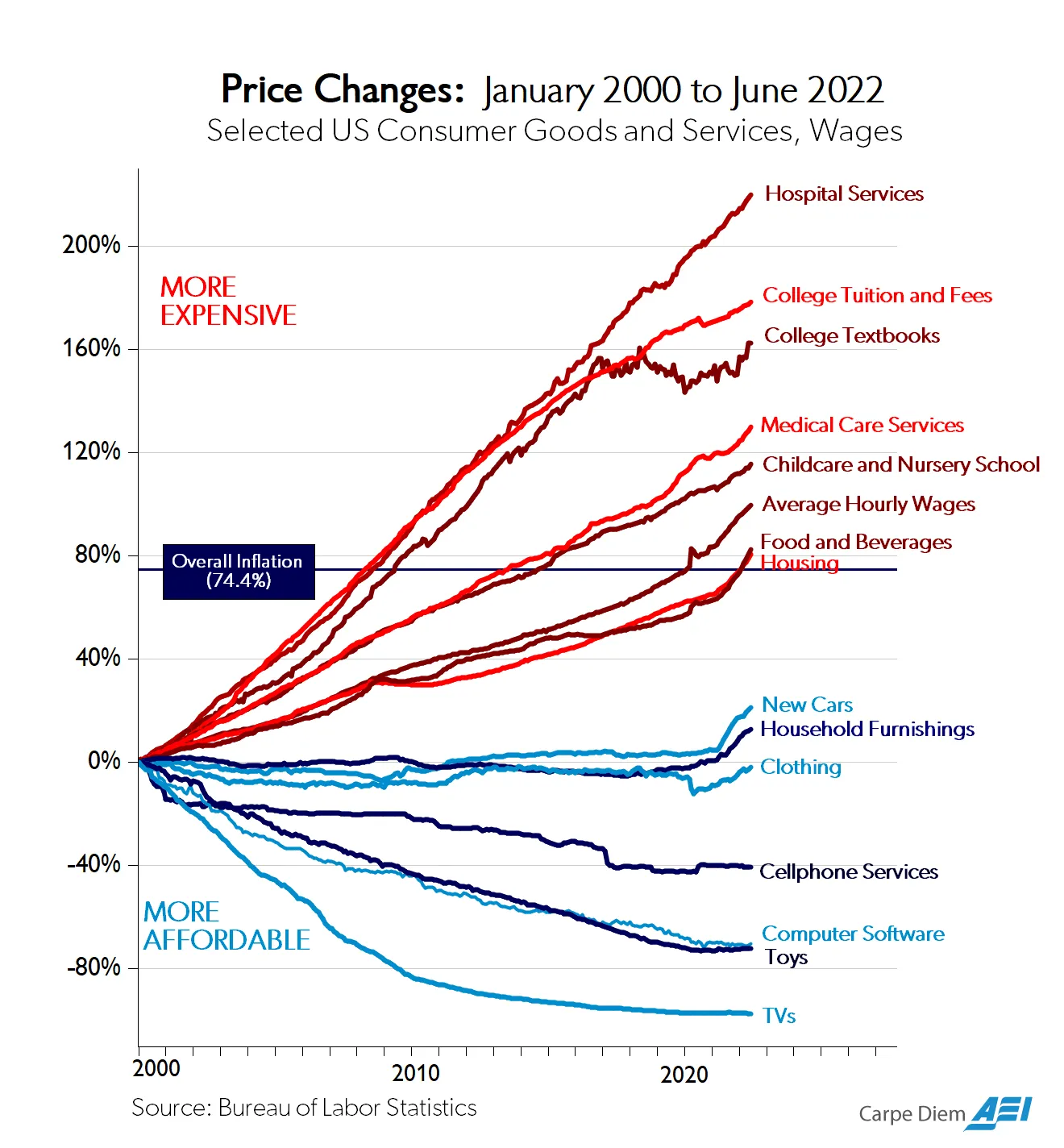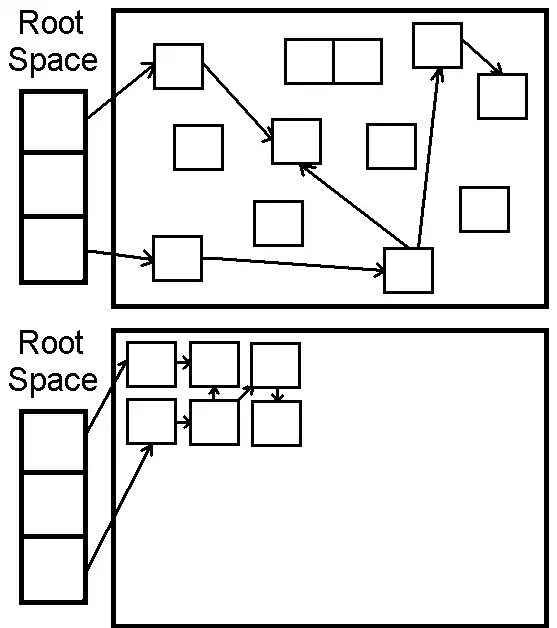Time to Take Out the Regulatory Trash
Every system has its limits: every trashcan fills up, every computer has a hard drive with a certain number of bytes, and every organization can only tolerate so many committees and rules before needing to clean things up. In a civilization, the proliferation of regulation works in the same manner. Marcus Tullius Cicero said, “The more laws, the less justice.” (summum ius summa iniuria)
In the mid-sixteenth century, the Ottoman Empire successfully consolidated power in the Middle East and North Africa by competent administration and a civil service that was ahead of its peers. But by the twentieth century, the Ottoman system had become famously bloated, archaic, and resistant to change. The bureaucratic Ottomans were unequipped for World War I and collapsed in the face of pressure from foreign powers.
Elon Musk recently likened the modern problem of bureaucratic excess to Gulliver’s Travels:
“If the nation is Gulliver, it’s being tied down by one little regulatory string at a time. Eventually, you have millions of strings and then the giant can’t move… there needs to be something where we delete rules, regulations, and laws. If all we do is add them, eventually we will be able to do nothing.”
And indeed, if the United States government excels at anything, it is at adding regulatory strings. The pace at which federal regulations are being adopted has consistently increased every decade. According to the Competitive Enterprise Institute (CEI), 2019 was the only year since record-keeping began in which fewer than 3,000 new regulations were adopted, when the Trump administration added 2,964 new rules.
And indeed, if the United States government excels at anything, it is at adding regulatory strings. The pace at which federal regulations are being adopted has consistently increased every decade. According to the Competitive Enterprise Institute (CEI), 2019 was the only year since record-keeping began in which fewer than 3,000 new regulations were adopted, when the Trump administration added 2,964 new rules.
On top of federal regulations, states add additional regulations that tie up businesses, consumers, and the economy each year as well. Just how many cords are we talking about? Well, the average state has some 135,000 regulatory restrictions on the books. The Mercatus Center estimates that nation-wide, state regulations contain 416 million words. And these regulations are stacked atop the more than 1 million federal regulatory restrictions. So even if Gulliver isn’t fully tied down by the federal regulatory burdens, the state burdens may indeed be enough to do it.
The costs to our society have been immense. Some of the costs are visible — the cost of goods and services in the most regulated sectors. But many of the costs aren’t visible: namely the missing economic growth and national wealth we could have had.
One study found that without the regulatory buildup from 1949 to 2005, our 2011 GDP would have been $39 trillion, over three times higher than what it actually was. Just measuring the loss in GDP from 1980-2011 due to excessive regulation, the Mercatus Center estimated that our missing GDP would be the 4th largest economy on earth — What If the US Regulatory Burden Were Its Own Country? On an annual basis, our regulations would also be a substantial national economy: the National Association of Manufacturers found “the total cost of complying with federal regulations in 2022 is an estimated $3.079 trillion (in 2023 dollars), an amount equal to 12% of U.S. GDP.”
All in all, the pace of regulation in the last 50 years is unprecedented in history. Regulators are motivated to write new regulations, and unmotivated to eliminate old ones; lawmakers and courts are too deferential to bureaucrats; the largest industrial giants (not to mention hospitals and universities) tacitly support costly regulations because they are even more costly to startup competitors. And those same companies can pass the regulatory burden onto consumers — shown in the famous AEI “Chart of the Century” of sector-based inflation. The more regulation, the more inflation.

So, what can be done?
At the state level, Idaho and Virginia offer examples of deregulatory governors. Brad Little now celebrates Idaho’s status as America’s “least regulated state.” The results are clear: since Little took office in 2019, Idaho has led the nation with a business growth rate of 5%. Virginia’s Glenn Youngkin established an Office of Regulatory Management. The ORM works with all agencies to review and approve regulations, setting clear and public guidelines.
But deregulators are the exception, not the rule, and the quantity and magnitude of both federal and state regulations has substantially increased in the last 50 years. For most jurisdictions, holding out for a deregulator-in-chief whose actions withstand future executives is a dubious strategy. President Trump managed to considerably reduce new regulatory burdens from President Obama’s peak; but merely slowing the growth wasn’t enough [1].
Even as reform advocates admire much of what was accomplished by Trump appointees, our country missed an opportunity to truly rewind the clock.
We share Elon Musk’s bias that before one can properly optimize things, one has to remove what isn’t needed. In bureaucracy, that would mean eliminating bureaucratic entities all at once to see what breaks, adding personnel and rules back in as necessary. He isn’t wrong. But unfortunately, (A) this is politically impossible, (B) the current judicial system would be skeptical based on what existing laws require of regulatory agencies, and (C) it isn’t a long-term solution. Even if you somehow got past A and B, we’d need a bold, competent leader to administer this type of system for years on end.
Borrowing a concept from computer science — garbage collection — is a helpful mental model. In computers, garbage collectors automatically search for discarded memory in order to free it up, instead of always relying on increased memory, which would be unsustainable. In our own country, we’ve “solved” the problem of regulatory growth by hiring more bureaucrats to manage the rules, instead of regularly getting rid of rules that are outdated or unnecessary. If we took a “garbage collector” approach, regulations would be regularly and automatically scrutinized. Regulators would have to fight for the continuation of individual provisions, and a tech-enabled process would guarantee accountability.

The Regulatory Garbage Collector Solution
Unlike many parts of the market, the bureaucratic sphere lacks mechanisms to eliminate broken cultures and inefficient entities. While imperfect, the “invisible hand” of market forces does tend to constantly clean out the worst players in private competition. So, bureaucracy needs an “invisible hand” too — one that is outright biased against new regulation. In the long run, that is the only viable systemic reform to stop stagnation-by-bureaucracy. And garbage collection is a great model for how to automatically and transparently implement an anti-regulation bias within the system. It needs two parts:
- Mandatory Regulatory Review, in which the presumption is a sunset — continued regulation should have to be adequately justified.
- Transparent Regulatory Creation and Review
1. Mandatory Regulatory Review
First: by default, regulations should not have a permanent lifespan. If a legislative body wishes to make a rule permanent, it can codify it into law. But rules written and approved by bureaucrats should not have the permanent status of law. Rules must be subject to regular review with automatic expiration if agencies do not justify the continued need for the rule.The status quo is that inaction means regulations live forever. It should be the opposite: inaction should kill regulations.
Lawmakers must mandate regular and transparent review of state and federal regulations, paving the way for a process of regulatory cleanup. Agencies should be forced to carefully scrutinize their current regulations every 5-10 years, not only to rubber-stamp their continued existence, but to fully re-vet the regulation and ensure it is still necessary, the least burdensome on regulated entities, and the most beneficial to the state’s citizens. For example, Congress could statutorily require that every agency review, carefully evaluate, and delete, modify, or fully re-promulgate each regulation every five to ten years. Rules that are worth keeping would go back through the full notice and comment process to ensure the public has an opportunity to highlight burdens the regulators may have ignored or overlooked in their review. Public comment also allows citizens to suggest changes to the regulations based on real-world experience living under the regulations. No matter the duration of the sunset the key feature of this process is backward-looking regulatory review enforced by automatic expiration.
2. Transparency
The second and key step is to harness technology to make the process of review itself transparent and accountable. For a variety of reasons — bureaucratic protest, lack of resources, simple inaction, etc. — many “mandatory” regulatory reviews just don’t happen. Our goal should be to make comprehensive reviews not just mandatory, but inescapable.
Technology-based transparency standards would disclose what regulations are under review, how those regulations will be evaluated, when regulations will be coming up for review, and any revisions or changes that regulators propose. Modern technology enables state and federal bureaucrats to show their work by sharing their reasoning for keeping or removing each rule, making every study they cite and all underlying data available to the public. Technology also enables the public to easily find regulations on the internet, review what changes are being proposed, and provide substantive feedback to the agencies.
A fully transparent and accessible process, buttressed with technology, would make review easier, faster, and more accountable to the public. It would further allow executives to more effectively manage bureaucrats, allow courts to more effectively sanction noncompliance, and allow the public to more effectively see what’s working. It goes without saying that a legislature, governor, or court should know who is responsible for a bureaucratic or regulatory decision. That is often not the case.
Technology can also help to flag predictions in regulatory proposals and build metrics that can be tested in the months and years after a regulation is on the books. If those predictions are wildly inaccurate, agencies should be required to return to the drawing board to either modify the regulation or wholesale withdraw it and try a different approach. Regular review should consider and evaluate the accuracy of such measurements, emphasizing effective prediction methodology.
In the status quo, agencies lack the incentive to perform a complicated review of the entire code of regulations on a regular basis. But if those regulations automatically expire but-for a review, agencies will prioritize the review for the most important and valuable regulations.
Like most things in government, this won’t ever be a perfect system, because the incentives are misaligned and “experts” with no skin in the game often allow ideological biases to interfere in the direction of abrogating more power to themselves as rulers, or to favor industries that they regulate — that’s human nature. But full transparency and a demand for accountability is the bare minimum of what we should expect.
Given the bias of the current system toward adding more and more regulations over time, the true long-term solution is to bias the system toward reducing and eliminating regulations — not just relatively, but in absolute terms. It will be an uphill battle, because accountability and transparency aren’t natural occurrences inside government agencies. But it’s how we begin to stop the regulatory strangling of America.
Over the next several years, bold action will be a major test for what can be accomplished nationally, and states are key: legislators can write laws today to sunset regulations without regulatory review and require use of technology to make it transparent and accountable! After freeing his left arm, Gulliver uprooted the Lilliputians’ ropes and escaped their trap. We can do the same, and fighting in the states is a great start.
[1] One measure of regulations that impose burdens on the economy, businesses, and consumers is the number of significant rules finalized each year. A significant rule “create a serious inconsistency or otherwise interfere with an action taken or planned by another agency; materially alter the budgetary impact of entitlements, grants, user fees, or loan programs or the rights and obligations of recipients thereof; or raise novel legal or policy issues arising out of legal mandates, the President’s priorities, or the principles set forth in [Executive Order 12866].” (Cite EO 12866). According to the George Washington University Regulatory Studies Center, there has only been one year since 1994 where the federal government has not finalized at least 100 significant regulations. And until the Trump administration, it was common for administrations to finalize upwards of 200 significant regulations each year.


Restoring Legislative Authority: A Balanced Approach to Agency Deference